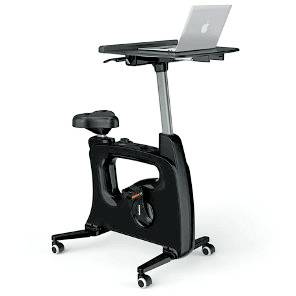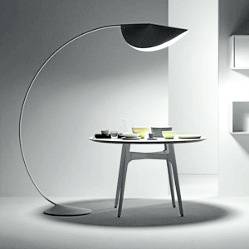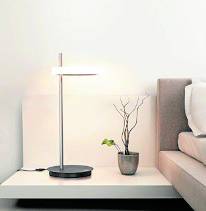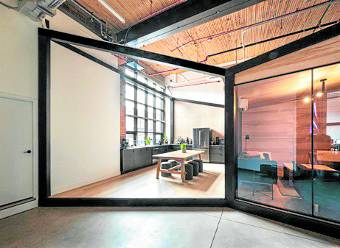Enhancing your cognitive abilities with light, space and movement
One of my favorite things to do at home while puttering about is listening to podcasts.
One that I subscribe to is The Huberman Lab, hosted by Dr. Andrew Huberman, a tenured professor of neurology and ophthalmology. His topics are about the brain and its connections with the body and how it affects or controls our behavior. While many of Dr. Huberman’s podcasts are scientific and quite technical, I thoroughly enjoy his lectures as they are practical and useful.
Influencing productivity
A recent episode was about optimizing focus, productivity and creativity in the workplace.
With most of us working from home in some of the most chaotic and distracting circumstances, work optimization stands as a priority, along with safety and wellness. Being a designer, I was most interested in the physical aspects that influence productivity.
And as someone that lives with the discomfort of scoliosis, I understand very well how the physical environment influences personal comfort, and how that, in turn, affects productivity.
In his talk, Dr. Huberman goes beyond mere physical, and touches on the effects of light, sound, vision and movement.
Article continues after this advertisementHe first emphasizes the importance of maintaining your circadian rhythm, dividing the day into three phases—the first being the period from your wake time until some six to nine hours after. Phase 2 is nine to 16 hours after waking, while Phase 3 is 17 to 24 hours after waking, or ideally the time you should be asleep.
Article continues after this advertisementLighting
Phase 1 should start by seeing sunlight within 15 minutes of waking. You should be in a brightly and naturally lit environment where the blue spectrum of morning light triggers the release of beneficial hormones.
Focus work is best executed at Phase 1 as our neurochemistry is primed for this type of work. If you sleep with black-out curtains, open them upon waking and have a set of sheer curtains or adjustable blinds to regulate a comfortable inflow of sunlight. Any discomfort could mean harm to your eyes.
For your workspace, it would be best to face out a window with light streaming into your production areas. If natural light is insufficient, augment with artificial light in 4000 to 5000 kelvin temperature, which mimics morning daylight, and locate your fixtures in front of and above you. Use overhead lighting like your ceiling downlights, a tall desk lamp, or a hanging pendant lamp.

Workspaces that are naturally lit from above, or those that face out to windows reap the benefit of the hormones produced by sunlight. —trendey.com
In Phase 2, which falls sometime in the early to mid-afternoon, your hormones increase serotonin and other neuromodulators that put your brain into a state that is conducive to creative thinking or abstract thinking.
During this phase, turn off overhead lights and keep lighting at eye level or lower. As the sun goes down, allow your body to wind down and expose yourself to the afternoon light. Use warm lights for your bedside, desk lamps and other table lighting. When shopping for your bulbs, look for those that fall in the range of 2000 to 3000 kelvin.
In Phase 3, you should be sleeping! If you have to stay awake for a prolonged period, resort to Phase 1 lighting. But if you’ll be working on tasks for a short while, maintain your circadian clock and a stable rhythm by using warm lights in the lowest possible illumination levels.
Movement
And then there’s movement. While there is still a lack of thorough research on this, there is enough evidence to show that it affects our work output and performance.

Moving while working, aside from the physical benefits, conditions your cognitive processes and makes the brain more receptive to learning. —Gainlaean.cf; amazon.com
People who sit for hours damage their bodies in so many ways. A combination of sitting and standing works best to alleviate the stresses of sitting. Decreasing sitting time by half the time increases vitality, reduces pain, and improves cognitive conditioning and receptiveness to new tasks. When we stand, our neurons for alertness kick in and help us stay focused.
There are many ways to elevate your work areas to mimic standing desks or you can find ways to change your positions to stimulate productivity. Studies show that “active” workstations increase the output in attention and cognitive thinking. Walking or cycling while executing cognitive tasks result in better output.
Visual field

When natural light is unavailable, overhead lighting mimics natural light when fitted with high blue spectrum light temperature ranging from 4000 to 6000 kelvin.—thefild.com
Then there’s your visual field. In workspaces, you don’t want to look too far out to your visual region. If you hold your hands perpendicularly to the outermost edge of your eyes like blinders, the space you see in front of you should be the limit of the area within which your eyes should work.
This visual window allows your brain to focus and function better. It is not surprising that one of the most common complaints in co-working spaces is the inability to do focused work. Hence, the need for quiet work capsules and semi-enclosed work areas that limit the visual field.
For every 40 minutes of desk work focus, stay by a window so you can look far and allow yourself panoramic vision for five minutes. This re-sets your eyes into being relaxed.
Quality of space
The quality of space affects your cognitive abilities too.
When you need more creative thinking, stay in a room or an area with taller ceilings. This creates the “cathedral effect” wherein our cognitive processes become more open to exploration, to loftier ideals, and higher aspirations. This is where thinking can go into brainstorming and reasoning becomes more abstracted. This is also where information from your memory bank can be extracted and synthesized into new ideas.

Keep your lights low, in terms of height and brightness once the afternoon sets in as this helps maintain your circadian rhythm, critical for cognitive processes and a good night’s sleep.
Conversely, low-ceiling environments are more conducive to more detailed and analytic work. As Dr. Huberman mentions, wearing a hoodie or a cap to restrict the visual window of height enhances this effect on your neural processes.
Dr. Huberman also discusses how the visual system influences the motor systems wherein smaller areas become mentally restrictive, like how when we are inside elevators, the limited area cues us to keep to our personal spaces, and movements like stretching or stepping forward can seem restricted even if the space will physically allow it.
This is why large open spaces invite us to move and stretch. It does the same for our cognitive faculties too. It’s no wonder artists go out in nature for inspiration and business executives hie off on a mountain trek when looking for answers to their business problems.
Dr. Huberman further talks about the importance of proper ergonomics for proper cognitive function, but we will tackle that another time.
For now, calibrate your lights and find the right spaces for your work. You can listen in on his podcasts too. It’s eight in the morning from where I sit and I’m getting up to open all my windows. I invite you to do that too.
